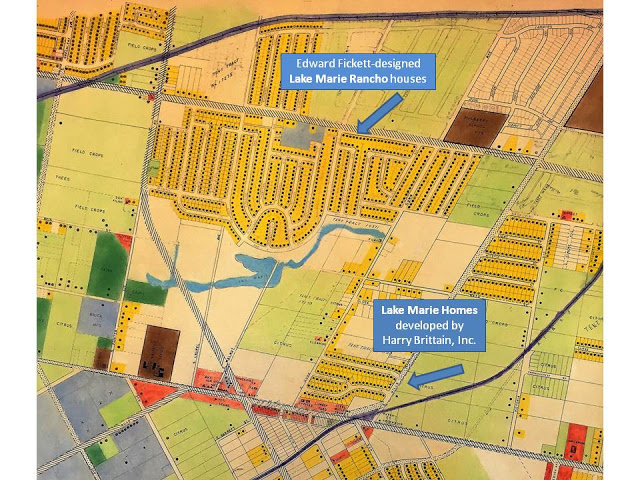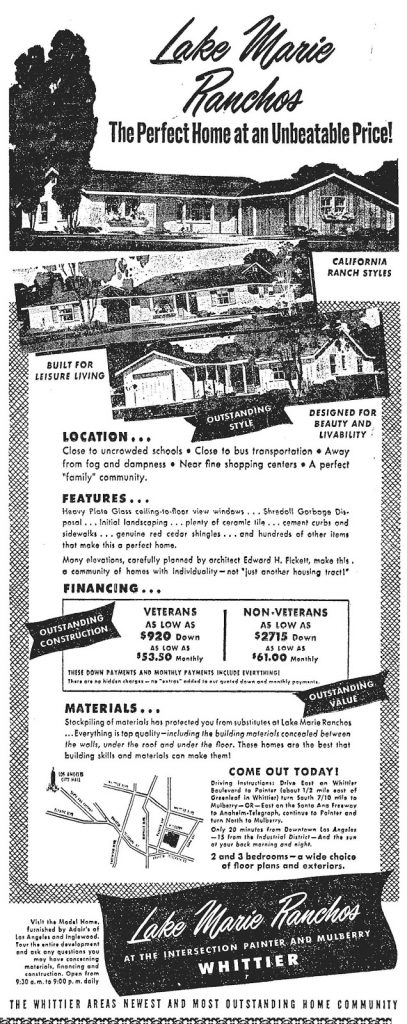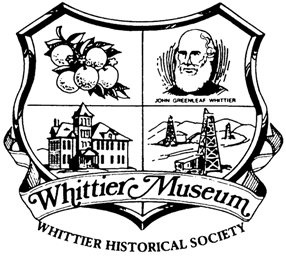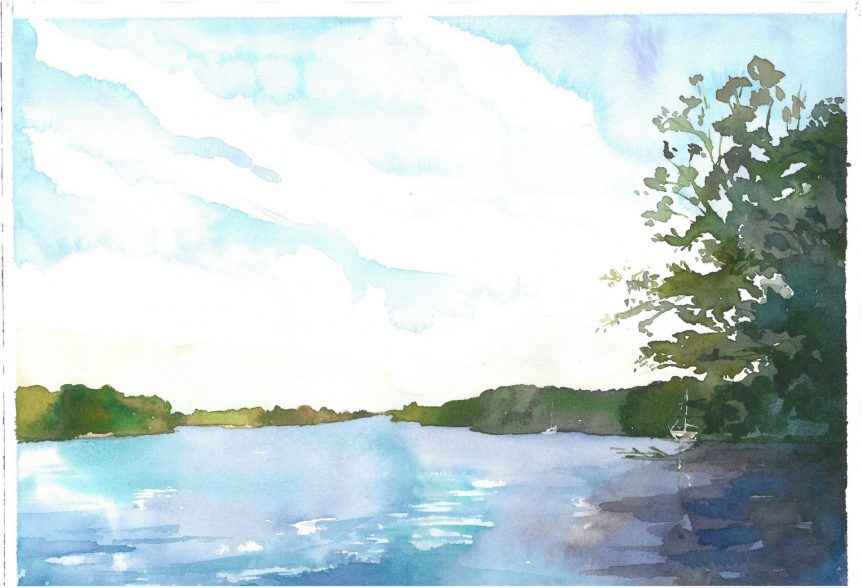People come to the Whittier Museum archives to research a variety of topics. They range from researching their homes, ancestry, a former business/building or just to clarify something they remember from their past. We do our best to help everyone who comes to the museum, but there is always the possibility we do not have what they’re looking for. When we can find the smallest bit of data to add to what someone is looking for, it’s a victory for Whittier history.
Last month we were contacted by a former resident of South Whittier, Jim Lentine, now a resident of Nevada, who was in pursuit of information about the history of Lake Marie, not Lake Marie Elementary School, but an actual “lake” that was once in South Whittier.
Some long-time Whittier residents might recall a body of water located in unincorporated Whittier called Lake Marie. From what we understand, the water source was originally a lagoon, more of a swamp than lake, “located south of Calmada Avenue, north of Close Street, between Carmenita Road and Gunn Avenue” (Unincorporated Whittier, Libertyplaza.org). The land was first owned by a Joe Gilliland who deepened and expanded the lagoon in order to irrigate crops alongside the property. The local lore was that he named the “lake” after his wife, Ruby Marie. The body of water was also referred to as Painter Lagoon.

During the 1950’s, the new owner, Harry Britain, a real-estate developer, filled in the lagoon, and subdivided the land. Two 1951 sub-divisions in the area used the Lake Marie name: Lake Marie Ranchos (designed by well-known architect Edward Fickett), and Britain’s Lake Marie Homes. Today, the remnants of Lake Marie are contained in the Sorensen Avenue Drain which runs just south of the Lake Marie Rancho sub-division. The Sorensen Avenue Drain is listed as a tributary of La Canada Verde Creek. It merges with Leffingwell and La Mirada Creeks, eventually joining Coyote Creek and finally merging with the San Gabriel River south of El Dorado Park in Long Beach.

Other than being aware of Lake Marie Elementary School (which opened in 1954 and is located near the former far western shore of Lake Marie), the history of the actual lake was very obscure to us. We regretfully had no information about this lake or the individuals related. The information we have comes mainly from oral tradition and childhood memories from Jim and his childhood friend. Both men, now in later years, had returned to South Whittier to find evidence and documentation of the lake’s existence, especially any photographs.
Jim shared stories of his childhood living in South Whittier. When the lake was filled in during his adolescent years, there still existed gullies that would easily fill with water when it rained and deep enough for them to make their own paddle boats to float in. Relatives of Jim would tell him that when the lake existed, it included a boat house and several boats you could actual go sailing on. Regretfully we have yet to find any photographs. If you can add any information regarding Lake Marie, please contact the Whittier Historical Society at 562-945-3871, info@whittiermuseum.org, or leave a comment below.
Author: Nicholas Edmeier
This post is adapted from an article that originally appeared in the Whittier Museum Gazette, Aug. 2020

